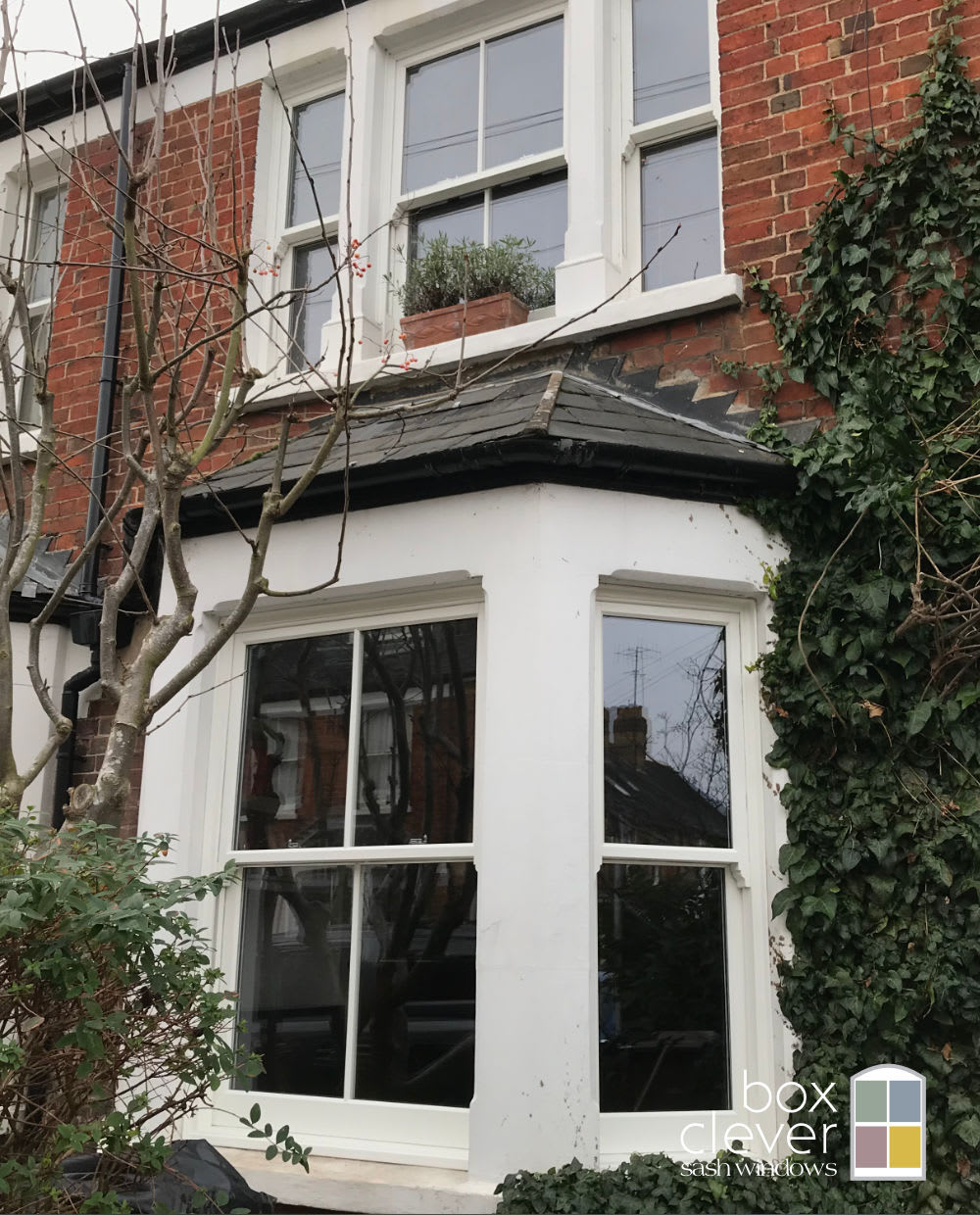Sash Windows In Oxford
From the golden stone townhouses of Jericho to the leafy period homes of North Oxford, we help homeowners across Oxford preserve the elegance of their sash windows — while upgrading comfort, energy efficiency, and performance to today’s modern standards.
At Box Clever Sash Windows, we specialise in full replacements and sash window upgrades that honour the original design, while improving how your windows feel and function. Our work is trusted across Oxfordshire for its craftsmanship, longevity, and discreet finish — with no compromise on quality.
We have a wide range of suppliers in both uPVC and Timber - meaning that we can tailor your windows to meet your needs. Be that style, colour, function or price, we bring decades of expertise to get your sash windows 'just right'.
Whether you're in a Victorian terrace in East Oxford, a Georgian home in Headington, or an Edwardian villa in Summertown, our expert team brings the same thoughtful, tailored approach to every project.Take a look at the gallery below to explore some of our recent sash window work in Oxford — and if you'd like advice or a quotation, just get in touch.
Contact us today on 0800 292 2968, email us at info@boxcleversashwindows.co.uk, or complete the form. We look forward to helping you.
Gallery of Work Done in Oxford Area
[Click the images to see larger version.]






























Examples of Work Done in Oxford Area
Detached Cottage in Oxfordshire
Created: February 11th, 2023

Eco friendly Timber Sash Windows chosen to replace draughty and ageing sash windows.
Edwardian property in Abingdon, Oxfordshire
Created: February 18th, 2019

Original windows had been replaced with plastic frames.
St Mary's, Oxford
Created: October 24th, 2018

A Victorian, end of terrace property in St Mary's area of Oxford.
A History of Sash Windows in Oxford
The Architectural Heritage of Oxford: A History of Sash Windows in the Borough
Renowned for its world-famous university, Oxford boasts a rich architectural heritage. Among its architectural features are the sash windows used in many of its period homes. This article explores the architectural development of Oxford through the centuries and highlights the rise of sash windows in its architectural landscape.
Oxford’s Growth Through the Centuries
Oxford dates back to the Saxon period. Significant growth occurred in the medieval era because the town became a centre of learning and religion. The city’s residential architecture changed most rapidly in the 17th to the 19th centuries, however, when sash windows became widely used.
The Introduction of Sash Windows in Oxford
Sash windows are believed to have been introduced to Britain in the late 17th century, likely influenced by Dutch or French designs. Their vertical sliding mechanism offered a practical advantage over traditional casement windows. It enabled better ventilation and rainwater proofing. Sash windows became popular among affluent homeowners quickly, leading to sash windows’ widespread adoption in Georgian and Victorian Oxford.
Georgian Oxford (1714-1830): The Rise of Symmetry and Elegance
The Georgian period marked a shift towards classical architectural principles of symmetry, proportion, and refinement. Many of Oxford’s townhouses and grand residences from this era feature the distinctive six-over-six or eight-over-eight pane sash windows.
A fine example of Georgian architecture featuring sash windows in Oxford can be seen in the terraces along St. John Street, and the grand townhouses of Beaumont Street. These 18th Century properties comprise the clean lines and balanced facades that define the Georgian aesthetic. Sash windows, with their narrow glazing bars and simple frames, were a fundamental element of this style.

Victorian Expansion (1837-1901): Innovation and Decorative Detailing
Oxford grew a lot in the Victorian era. This growth was spurred by the arrival of the railway in the 1840s. As Oxford’s population increased, new residential areas such as Jericho, North Oxford, and Grandpoint were built to house middle-class professionals and academics.
Victorian houses in these areas often featured more elaborate sash windows than their Georgian predecessors. Here as in other areas of the country, advances in glass production allowed for larger panes, leading to the classic two-over-two sash window design. Bay windows, stained glass inserts, and intricate wooden frames became popular, too - particularly in the affluent North Oxford suburb.

Edwardian and Early 20th Century Homes (1901-1930s)
This period saw the continued use of sash windows in Oxford, often in a grander format. Homes built in areas like Summertown and Headington incorporated wider bay windows and larger sash designs to allow in more natural light. These properties reflect a transition from the ornate detailing of the Victorian era to a simpler, open architectural style.
Preserving Oxford’s Sash Windows Today
Many of Oxford’s historic homes retain their original sash windows, even though some homes have been restored to enhance energy efficiency. Conservation efforts across the city ensure that sash windows remain an integral part of Oxford’s residential architecture.
Homeowners and developers in Oxford often seek traditional sash window specialists to replace or restore these windows. Oxford has many conservation areas, so careful consideration must be taken to preserve its architectural heritage.

Interesting Historical Snippets
- Sash windows in Britain date back to the 1670s, making them a contemporary feature of some of Oxford’s college buildings.
- North Oxford, developed in the late 19th century, was built to house university professors and dons, many of whom lived in red-brick villas featuring large bay sash windows.
- During World War II, some historic Oxford homes had their original glass panes removed to prevent damage from bomb blasts, leading to many post-war restorations of sash windows.
Oxford’s architectural history is mapped by the development of sash windows, which were used increasingly in new homes in the Georgian, Victorian, and Edwardian periods. Sash windows not only add to the character of the city but also reflect its evolution from a medieval town to academic and cultural hub. Today, preserving and restoring legacy sash windows remains essential to maintaining Oxford’s timeless charm.





























